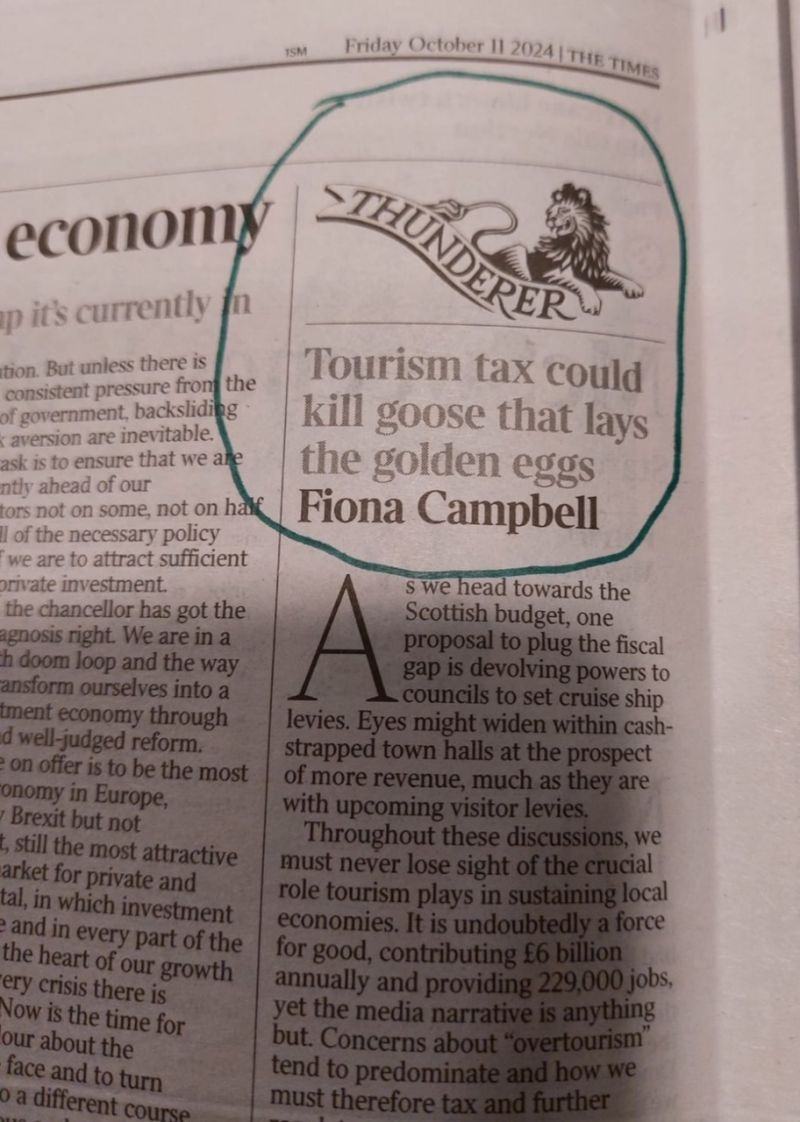Fiona Campbell, ASSC Chief Executive: The Times, Friday 11th October 2024
As we head towards the Scottish budget, one proposal to plug the fiscal gap is the idea of devolving powers to councils to set cruise ship levies. Eyes might widen at cash-strapped municipal town halls at the prospect of more revenue, much as they are with upcoming visitor levies.
Throughout these discussions, we must never lose sight of the crucial role tourism plays in sustaining local economies. It is undoubtedly a force for good in Scotland – contributing £6bn annually and providing 229,000 jobs – yet the media narrative can be anything but. Concerns about ‘overtourism’ tends to predominate and how we must therefore tax and further regulate as a consequence.
Indeed, The City of Edinburgh Council was quick off the mark with its visitor levy plans but they must tread carefully. They want a 5% rate on stays of up to 7 days, while the Scottish Greens want it hiked to 9%. We would urge extreme caution against setting it at a level that could tip the balance towards it having a detrimental impact to the city’s reputation as a leading destination. Troublingly, we still don’t know at what level the The Scottish Government would intervene to set a maximum rate.
Visitor levy supporters are often blasé in writing off business concerns because it is common practice elsewhere. This ignores the significant difference in context. Most European countries that impose it do not also charge 20% VAT on accommodation, as Scotland does. Moreover, it’s not just foreign tourists who will feel the pinch. Ordinary Scots, visiting parts of their own country, will also be subject to this ‘tourist tax’. These individuals already contribute to local services through existing taxation, making the levy feel somewhat unjust in its application.
The unfairness doesn’t stop there. It was puzzling that cruise ships were omitted from the visitor levy at the outset. This leads to the perverse situation where a local self-caterer would bear the administrative brunt of the new charge, whereas multinational-owned cruise ships would be excluded. This inequity exacerbates the operational challenges for small businesses who are struggling to remain afloat.
Whether it is cruise ship or local visitor levies, it is imperative that industry works closely with local and national governments to ensure its introduction does not inflict lasting damage to Scotland’s tourism industry. For accommodation based on dry land, the visitor levy is coming whether we like it or not.
Ensuring that monies raised are ringfenced for tourist infrastructure projects is vital to retaining industry confidence. Fair rates, thoughtful implementation, as well as careful attention to potential unintended consequences are also essential. Failure to take these steps could result in a tourism levy that erodes the very industry it is supposedly intended to support.
